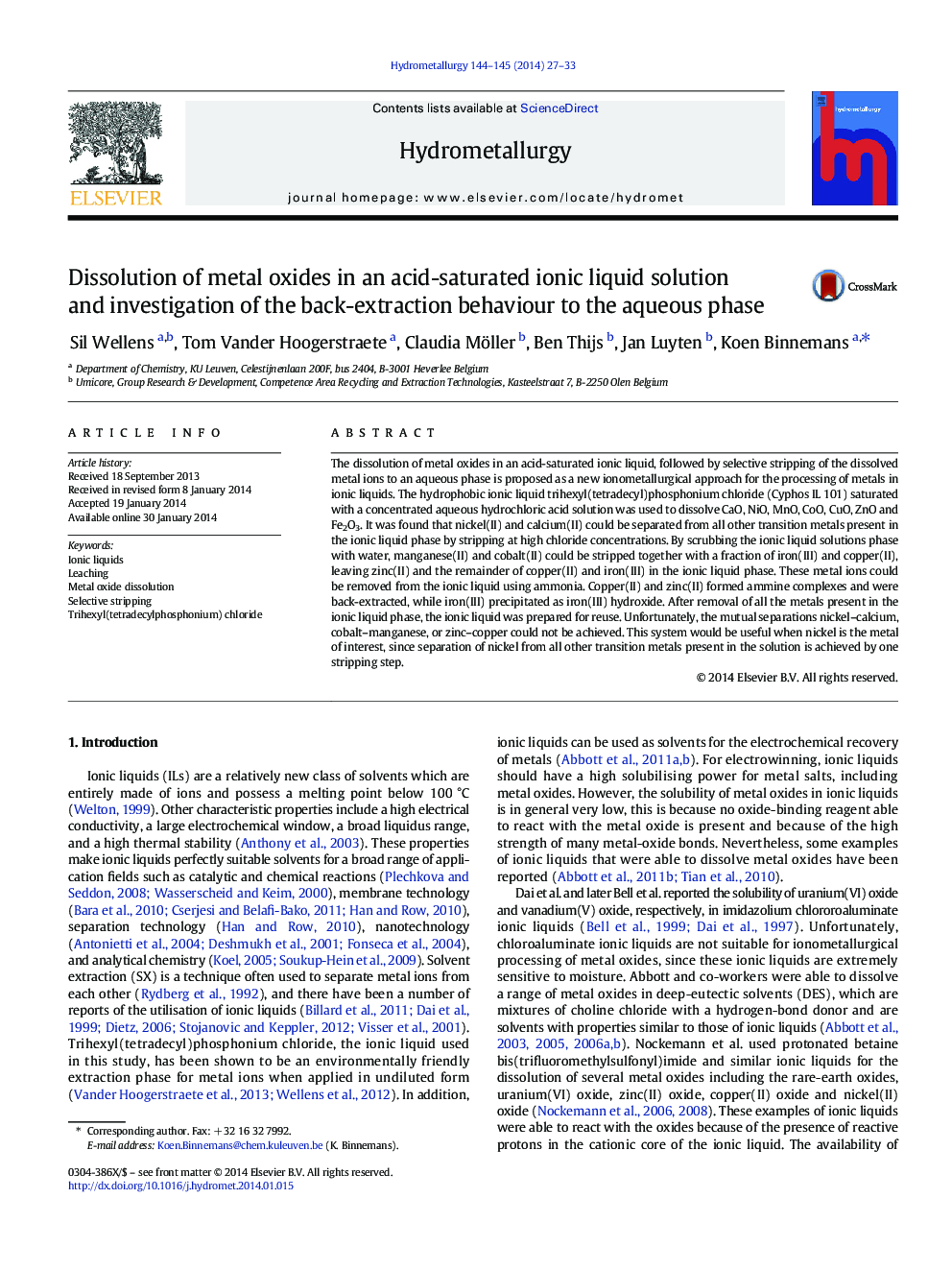| کد مقاله | کد نشریه | سال انتشار | مقاله انگلیسی | نسخه تمام متن |
|---|---|---|---|---|
| 212192 | 462036 | 2014 | 7 صفحه PDF | دانلود رایگان |
• Metal oxides could be dissolved in an acid-saturated ionic liquid solution.
• Separation of a mixture of metals was achieved by selective stripping from the ionic liquid phase.
• Nickel and calcium were separated from cobalt, iron, manganese, copper and zinc in one stripping step.
• The mutual separation of cobalt, manganese, iron and copper was poor.
• The ionic liquid could be recycled after removal of iron, copper and zinc.
The dissolution of metal oxides in an acid-saturated ionic liquid, followed by selective stripping of the dissolved metal ions to an aqueous phase is proposed as a new ionometallurgical approach for the processing of metals in ionic liquids. The hydrophobic ionic liquid trihexyl(tetradecyl)phosphonium chloride (Cyphos IL 101) saturated with a concentrated aqueous hydrochloric acid solution was used to dissolve CaO, NiO, MnO, CoO, CuO, ZnO and Fe2O3. It was found that nickel(II) and calcium(II) could be separated from all other transition metals present in the ionic liquid phase by stripping at high chloride concentrations. By scrubbing the ionic liquid solutions phase with water, manganese(II) and cobalt(II) could be stripped together with a fraction of iron(III) and copper(II), leaving zinc(II) and the remainder of copper(II) and iron(III) in the ionic liquid phase. These metal ions could be removed from the ionic liquid using ammonia. Copper(II) and zinc(II) formed ammine complexes and were back-extracted, while iron(III) precipitated as iron(III) hydroxide. After removal of all the metals present in the ionic liquid phase, the ionic liquid was prepared for reuse. Unfortunately, the mutual separations nickel–calcium, cobalt–manganese, or zinc–copper could not be achieved. This system would be useful when nickel is the metal of interest, since separation of nickel from all other transition metals present in the solution is achieved by one stripping step.
Figure optionsDownload as PowerPoint slide
Journal: Hydrometallurgy - Volumes 144–145, April 2014, Pages 27–33
